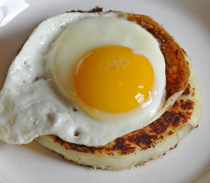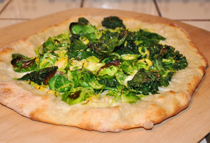February 17, 2024. “Results showed that most people were gaining weight gradually over time, with the average American adult gaining 1 to 2 lb per year … relatively small changes in energy intake and expenditure adding up to 100 kcal/day could arrest excess weight gain in most people.” Journal of the American Dietetic Association.
Yup, knocking off 100 calories a day is enough to stop weight gain for most of us. That’s taking a brisk 15-minute walk. Or not taking a can of Coke. Let’s see: a couple of pounds per year. For a decade. Or two. Or three. What’s that – plus 60 pounds from age 20 to age 50? Yeah.
You know the equation: if you burn as many calories as you eat, you don’t gain weight. And you know I do the math for Better Cheaper Slower recipes. I always tell you how many minutes it takes to walk, run, dance, garden or surf the calories away.
So you may be wondering about the bigger picture. A whole day. Not just a meal and a brisk walk. If you’re breathing, you’re burning calories. Your heart’s always pumping. Your brain’s always doing whatever it’s doing. So here’s the way I figure it.
A Day in the Life
Let’s say you spend eight hours a day at a desk. You burn about 100 calories each hour. That’s 800 calories at the office. If you’re on your feet all day, bartending an 8-hour shift for example, you’ll burn 1,200 – 1,500. Depends if you’re stirring or shaking.
And let’s say you sleep eight hours a night. About 45 calories each hour. Let’s round it up to 400 and call it a night. Sex? 90 – 180 per hour, depending on, well, you know.
That leaves eight hours to burn. If you’re eating the Slower way, you’ll spend at least two hours eating three meals. About 100 calories per hour for sitting upright, chewing and talking between bites. About the same for showering, brushing your teeth and sitting on the toilet. So add another 100 calories for the hour you spend on “personal care”. And another 100 for each hour you spend “in transit”, driving a car or sitting on a train.
This brings many of us to 1,600 calories in 20 hours. And to the moment of truth. Actually, the four hours of moments. Tell me, what are you doing? On the couch reading or watching TV? That’s 60 calories per hour. Playing actively with kids? 250. Cooking: 180. Very brisk walking: 320. Running at 5 mph: 600. At 7.5 mph: 930.
So it’s those four “free” hours each day that make the difference between maintaining, gaining or losing weight. Might just be one hour that makes the difference. The one hour each day you might devote to mind-clearing, body-sweating exercise.
It’s the difference between burning a little more, or less, than 2,000 calories. That’s the expert-recommended daily intake for the “average” adult. (See the “Fine Print” below to see which side of “average” you’re on.)
Now let’s look at the other side of the equation: what you’re swallowing every day. Let’s start at the rock bottom of the food chain: fast food at chain restaurants.
And let’s have breakfast at Dunkin’ Donuts. Bacon, egg and cheese on a bagel: 510 calories. Sausage, egg & cheese on a croissant: 690. No? OK, maybe something sweet. Like the blueberry crumb donut: 500. To be fair, the basic glazed donut is just 260 calories. If you eat just one. A medium mocha coffee: 170. Plain small coffee with milk and sugar: 80. Large with cream and sugar: 250.
How about lunch at McDonald’s? Big Mac: 540. Medium Fries: 380. Pack of ketchup: 15. McFlurry with M&Ms: 710. The heck with that; you can get the Hot Fudge Sundae for 330 calories. Medium Coca-Cola: 210.
We could try KFC for dinner: 790 calories in the chicken pot pie. 560 in the Hot Wings Value Box. On second thought, what would you think about Red Lobster? The Admiral’s Feast: 1280 calories. An order of Coconut Shrimp: 880.
Oh, yeah. Anything between meals? Two cans of Coke Classic in a day: 280 calories.
So this is where the obesity epidemic comes from. Of course, you’re reading this at Better Cheaper Slower, so that’s not what and where you’re eating. Right?
But you see how it’s pretty easy to consume more than 2,000 calories a day. And burn fewer. And gain a couple of pounds per year. For a decade. Or two. Or three. What’s that – plus 60 pounds from age 20 to age 50? Yeah.
If you replace an hour a day in front of a screen (60 calories) with an hour of brisk walking (320), you have a net loss of 260 calories a day right there. If you replace a can of Coke with a glass of homemade soda, your net loss is about 100. Have a homemade pizza instead of one from Domino’s, your net loss is about 200. You’ll save a lot of money, too.
Maybe you rather knock it out of the park once a week. Take an all-day walk or hike. Eight hours at 300 calories each: 2,400 calories. Can’t beat those Walks That Ate. And Adventure Hikes.
You don’t have to be a math major to get this. Just try some new Ways until you find a few you love.
It’s Always Something
Even if you exercise vigorously for an hour – five times a week – too much sitting still significantly increases your risk of all those things you exercise to avoid. You’ll have significantly higher risk of “cardiovascular disease, type 2 diabetes, metabolic syndrome risk factors, and obesity … because any type of brief, yet frequent, muscular contraction throughout the day may be necessary to short-circuit unhealthy molecular signals [from prolonged sitting] causing metabolic diseases.” American Diabetes Association, “Role of Low Energy Expenditure and Sitting in Obesity”. So Don’t Just Sit There.
The fine print
If you’re interested, The Compendium of Physical Activities is the mother document. The result of an amazingly comprehensive study done at Stanford University about twenty years ago. There’s a link to download it on this page.
They figured out how many calories you burn in an hour doing every imaginable thing. Well, not how many you burn, but how many calories are burned per kilogram (2.2 pounds) of human flesh. So when you read that you’ll burn 320 calories by walking briskly for an hour, that’s fairly accurate if you happen to weigh 150 pounds, the “average” weight that’s used for calculating these things. If you weigh less, you’ll burn less. If you weigh more, you’ll burn more.
Because every pound of flesh is burning calories. Now, as you know, all flesh is not created equal. A pound’s a pound, but muscle’s a lot denser than fat. So a cubic inch of muscle burns more calories than a cubic inch of fat. And a wiry, all-muscle, no-fat 150-pounder burns more calories than a flabby 150-pounder. Even when the wiry one is sleeping. Or sitting at a desk. It’s true: the thin keep getting thinner.
Better and Cheaper Soda
Twelve ounces of shockingly great and easy-to-make homemade Ginger Ale: 26 calories: A 12-ounce serving of Coke: 140. Save 100 calories and a lot of money.
Better and Cheaper Snacks
Kale Chips: sounds weird, tastes great. Everybody’s amazed by these. The kale: 1 calorie per chip. Go ahead, have 20 or 30. That’ll get you more than twice your daily Vitamin A requirement and significantly more than your Vitamin C requirement. And some dietary fiber. For about 25 cents. A very little bit of olive oil will add 15 calories to your feeding frenzy and 10 cents to your cost.
Way Better and Cheaper than the $1.29, 2.75-ounce pack of 412-calorie Frito-Lay’s potato chips. Four times the cost; ten times the calories. Try the kale, huh? I like to dance, but you have to be a dancin’ fool for more than an hour to burn off the potato chips. The kale? You’ll torch the calories before you finish the album version of Light My Fire.
A New Way Every Day. 1 year for $10. Subscribe now.
Better and Cheaper Breakfast
Olive Oil-Maple Syrup Granola with a half cup of whole milk and a banana is my 400-calorie breakfast of choice. Turns out to be almost exactly equal to my 30-minute morning treadmill run. Too crunchy for you? One Sunnyside Potato Pancake‘s just 110 calories. A brisk 20-minute walk. Have two and walk for 40 minutes.
Each one of these is Better and Cheaper than one 510-calorie Blueberry Crumb Dunkin’Donut.
Better and Cheaper Lunch
Total calorie count for a whole Winter Greens Pizza: 525. Your half: 30 minutes of sledding or 45 of brisk walking burns 265 calories.
Better and Cheaper than a Big Mac and its 540 calories.
Better and Cheaper Dinner
Shrimp & Grits: 235 calories. You’ll burn about 200 by standing and stirring the grits occasionally for an hour. One of the four delicious servings of grits you get from this recipe: 205 calories (less if you skip the butter). The cook eats grits calorie-free. The shrimp? 30 calories for four big ones. Really. Your non-stirring guests? A 40-minute walk.
Just 505 calories in a big serving of my Thanksgiving Beef Short Ribs. Which give you 75% of your daily protein need and a big shot of iron for about 360 calories. Their carrots: 75 calories and six days worth of Vitamin A. Their fennel: 35 calories and a big shot of Vitamiin C. The garlic: 25 calories and extended vampire protection. Onion: 10 more. A 45-minute jog. 90 minutes of brisk walking.
Way Better (and Cheaper) than swallowing a Big Mac and a Medium Fries for 920 calories. Or the Chicken Pot Pie at KFC: 790 calories. Or an order of the Coconut Shrimp at Red Lobster: 880.
Every Thing Is Everything
“ … exercise has a benefit of reducing risks of cardiovascular disease and diabetes, beyond that produced by weight reduction alone.” (from the National Heart, Lung and Blood Institute of NIH. Their Guide to Physical Activity lists many examples of “moderate physical activity”, including “Raking leaves for 30 minutes” and “Walking 2 miles in 30 minutes”.)
“Like muscle, bone is living tissue that responds to exercise by becoming stronger… The best exercise for your bones is the weight-bearing kind, which forces you to work against gravity. Some examples of weight-bearing exercises include weight training, walking, hiking, jogging, climbing stairs, tennis, and dancing.” (National Institutes of Health)
“physical activity and leanness were associated with a reduced risk for erectile dysfunction…” Sexual Function in Men Older Than 50 Years of Age, Annals of Internal Medicine. Sex, Drugs, Rock’n’Roll
Move your body, sharpen your mind. “Physical activity in older adults improves psychomotor processing abilities and is associated with greater brain activation… even for moderate levels and even when started late in life. The Journals of Gerontology


